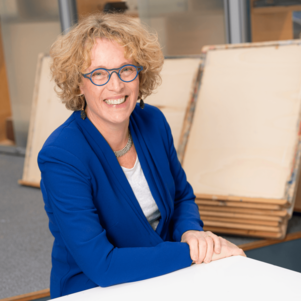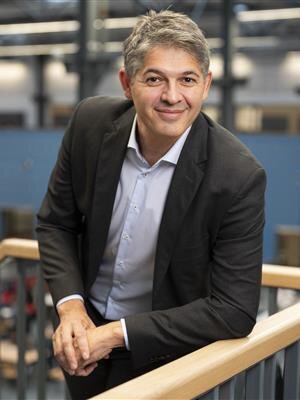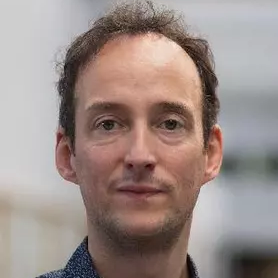Collaborations by design
Addressing the complex challenges of today and tomorrow requires many actors, perspectives and disciplines. But forming effective and mutually beneficial collaborations can be challenging. Designing with Delft aims to facilitate this process, bringing researchers and educators from the university together with innovators from organisations to identify common goals, define a shared vision and develop concrete plans for collaborations.
Bridging the gap
It often happens that external organisations want to partner with TU Delft but don’t know the best way to do so. At the same time, researchers want and need to collaborate but their time is better spent focussing on research. “There’s a real opportunity to bridge a gap between the research world and the practical world and we truly believe the design approach can help in doing this,” said Katinka Bergema, co-founder and Business Developer of Designing with Delft.
Designing with Delft was established in early 2021 at the Faculty of Industrial Design Engineering. With the support of TU Delft’s TU Delft’s Innovation and Impact Centre, the initiative aims to bring TU Delft and the outside world together, aligning the needs of an organisation with the university’s research and education aims in order to create impactful collaborations.
The value of Delft design
Design, by nature, involves both future-oriented and multi-disciplinary approaches. Designers ask questions like what are we going to do in the future, what does that mean and how can we make it happen? And Delft designers are no strangers to working on challenges involving multiple stakeholders. In fact, they are uniquely capable of understanding problems and guiding a collaborative process towards solutions. This is in part thanks to the Delft Design Approach, structured methods developed and taught at TU Delft that helps designers tackle complex design challenges.
With this design approach at the core, Designing with Delft created a series of workshops to bring practitioners and researchers to the table. The first workshop, Goal Finding, is about identifying common areas of interest for the university and the external organisation. The Making Plans workshop then turns those ideas into something more concrete by defining what the partners want to achieve and by creating a roadmap for the future. Lastly, there’s the Design Sprint which focusses on strengthening the collaboration. Using a design approach on a joint case between the university and the organisation allows the participants to understand and experience what design is. Ultimately, the goal is getting participants to envision a joint future and agree on how to get there and that’s just what they are doing.
Libraries of the future
When the National Library of the Netherlands (Koninklijke Bibliotheek) approached the TUD to explore ideas related to artificial intelligence, it was the perfect opportunity to apply the Delft design approach. Bringing people together from the national library with several TU Delft researchers, Designing with Delft facilitated a series of workshops. “It created an environment that was really conducive to interaction and despite the obvious differences in language, ambition, and incentives we managed to be quite open and to the point,” said Alessandro Bozzon, Professor of Human-Centred Artificial Intelligence at TU Delft’s Faculty of Industrial Design Engineering. “It was an amazing experience on all fronts.”
The result was the Future Libraries Lab. Bozzon, also the Lab Director, explained that its purpose is to facilitate and foster the multidisciplinary work that is required in order to address the challenges that modern and future libraries have. “Libraries are changing, both in terms of the type of content that they serve, but also the role they play in society,” he said. “That calls for innovation that is not only technological, but also in terms of interaction, services, and organisation.”
Through the workshops, they identified topics that are relevant and interesting for both the university and the library. To date, it has resulted in four different lines of work involving three TU Delft faculties (IDE, EEMCS and Architecture), an example of multidisciplinary collaboration.
Knowledge transfer is a two-way street
Ford Motor Company has been collaborating with TU Delft for several years through a number of research and education projects. According to Nicole Eikelenberg, Research Engineer for Smart Vehicle Concepts, one of the first joint projects involved researching user groups through context mapping, which then evolved into other projects. An alumna of TU Delft’s Faculty of Industrial Design Engineering herself, Eikelenberg said, “We started realising that the students have some capabilities that we really value yet we don’t have them. We wanted to learn from them and that’s what led to our first workshop with Designing with Delft.”
The collaborations have been fruitful for Ford. Eikelenberg noted one example, an application that spun off of those first projects that they soon hope to launch and market. But it’s not only the company that benefits because strong collaborations involve knowledge transfer from both sides. In this case, Ford also presents interesting research questions to the university and participates in courses by providing stimulating assignments that students benefit from. And although they don’t always directly use the results of the student projects, Eikelenberg said they are often inspired by new ideas and directions.
Eikelenberg noted that design thinking is already widely used within Ford, but the sessions with Designing with Delft provided new ways of thinking and valuable tools that contribute to building up user communities and testing out new concepts. “The theory of design thinking may not be rocket science, but by using it you bump into practical problems you really have to experience yourself to know how to handle them. That’s where we really learned a lot from the way the university works.”
Reaching for greater impact
Dean of the Faculty of Industrial Design, Ena Voûte has been instrumental in the formation of Designing with Delft and her ambition is clear: “I hope that we do enough projects to make people recognise the value of our way of working, that they realise it adds something even when they can’t put their finger on it easily. I hope we might change the way they think, help them see more opportunities and connect them with new partners. ”
It seems to be working. Designing with Delft co-founder and IDE valorisation team member Geert van den Boogaard noted that they are starting to get more inquiries outside of the Industrial Design faculty. By facilitating collaboration between TU Delft and the outside world, he hopes to nurture long-lasting and mutually beneficial relationships. “I think it’s important that it’s a collaboration that makes sense to the partner and to the university,” he said. “By involving the design process in between, we try to balance those two out.”
And when it comes to TU Delft’s mission of creating impact for a better society, Designing with Delft is on target. “You can really make an impact if government, companies, research institutes, and students collaborate. You need them all at the same time,” said Bergema. “We can help in facilitating this kind of collaboration because a company really thinks differently than a government or a university. That’s not a problem, that’s a strength, but at some point, you need to bridge the differences. I think that’s where we can play a role.”
Nicole Eikelenberg | LinkedIn

Ena Voûte
- +31 (0)15 27 83278
- M.A.Voute@tudelft.nl
-
32-C-4-240

Alessandro Bozzon
- +31 (0)15 27 87822
- a.bozzon@tudelft.nl
- Personal website
-
Room B-3-370
Working days: M T W T F
"Twenty years from now you will be more disappointed by the things you didn't do than by the ones you did do."

Geert van den Boogaard
- +31 15 27 83945
- G.a.vandenboogaard@tudelft.nl
-
Co-founder of Designing with Delft

Katinka Bergema
- katinka@designingwithdelft.nl
- Designing with Delft
-
Co-founder and Business Developer of Designing with Delft








